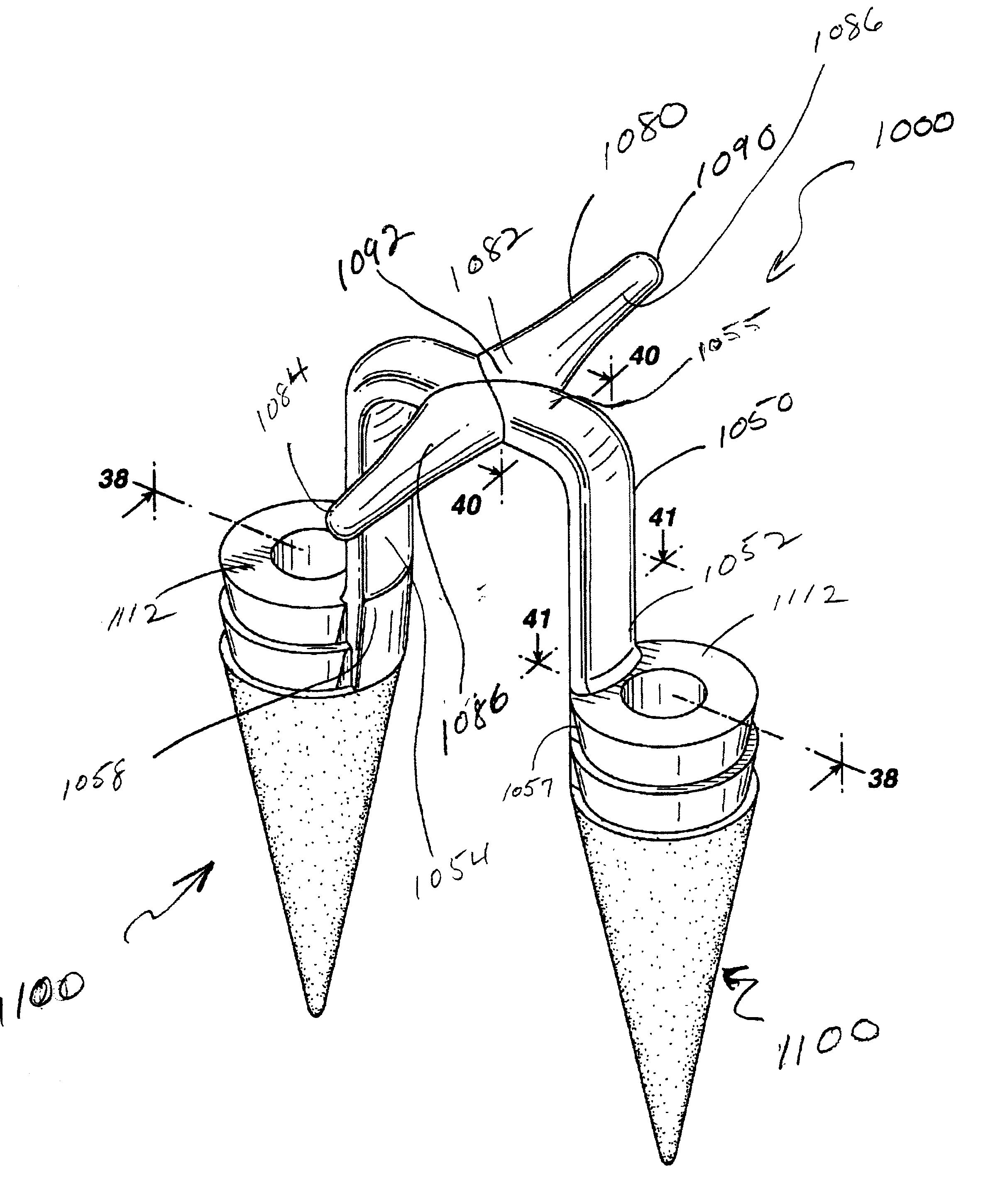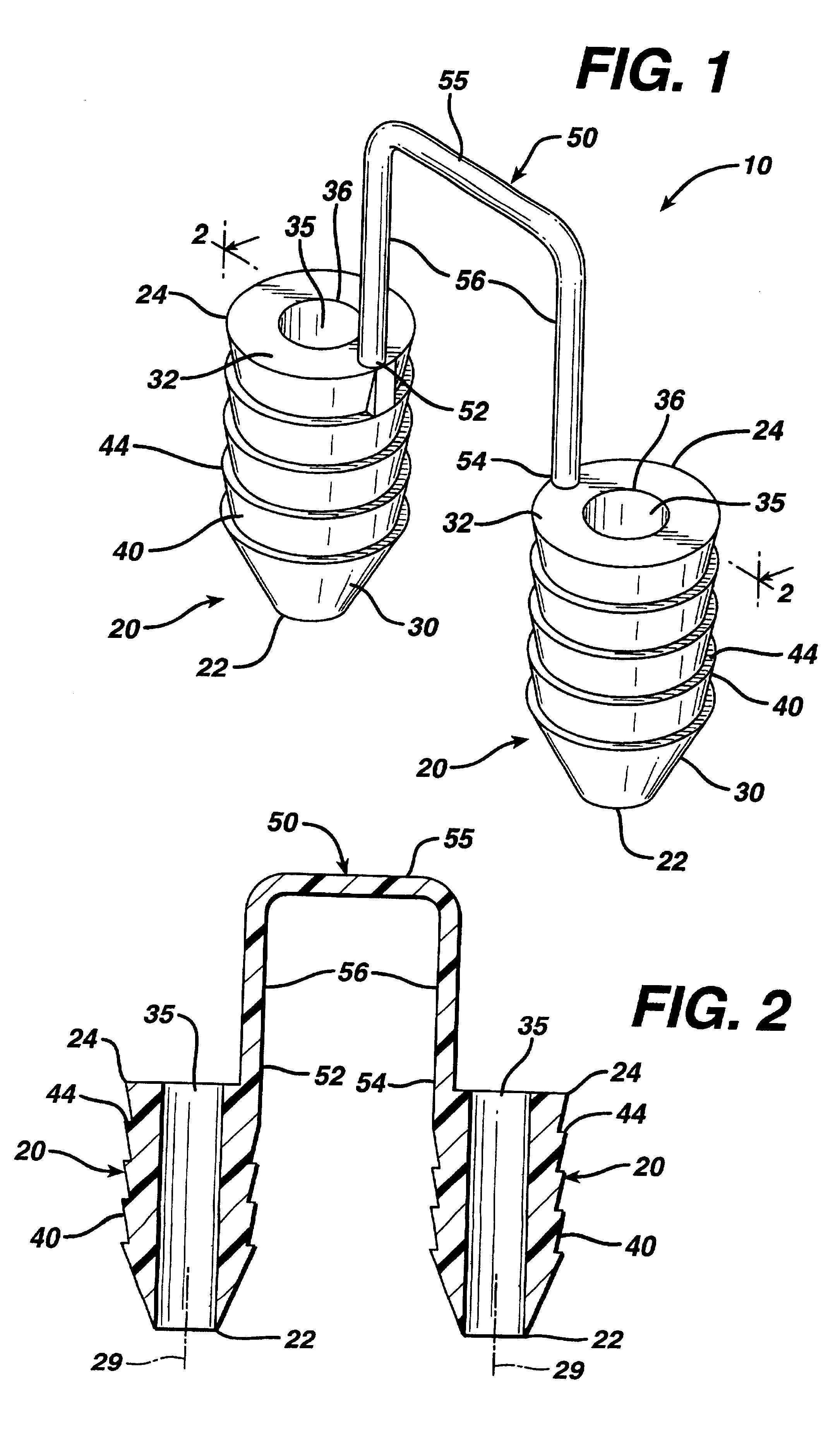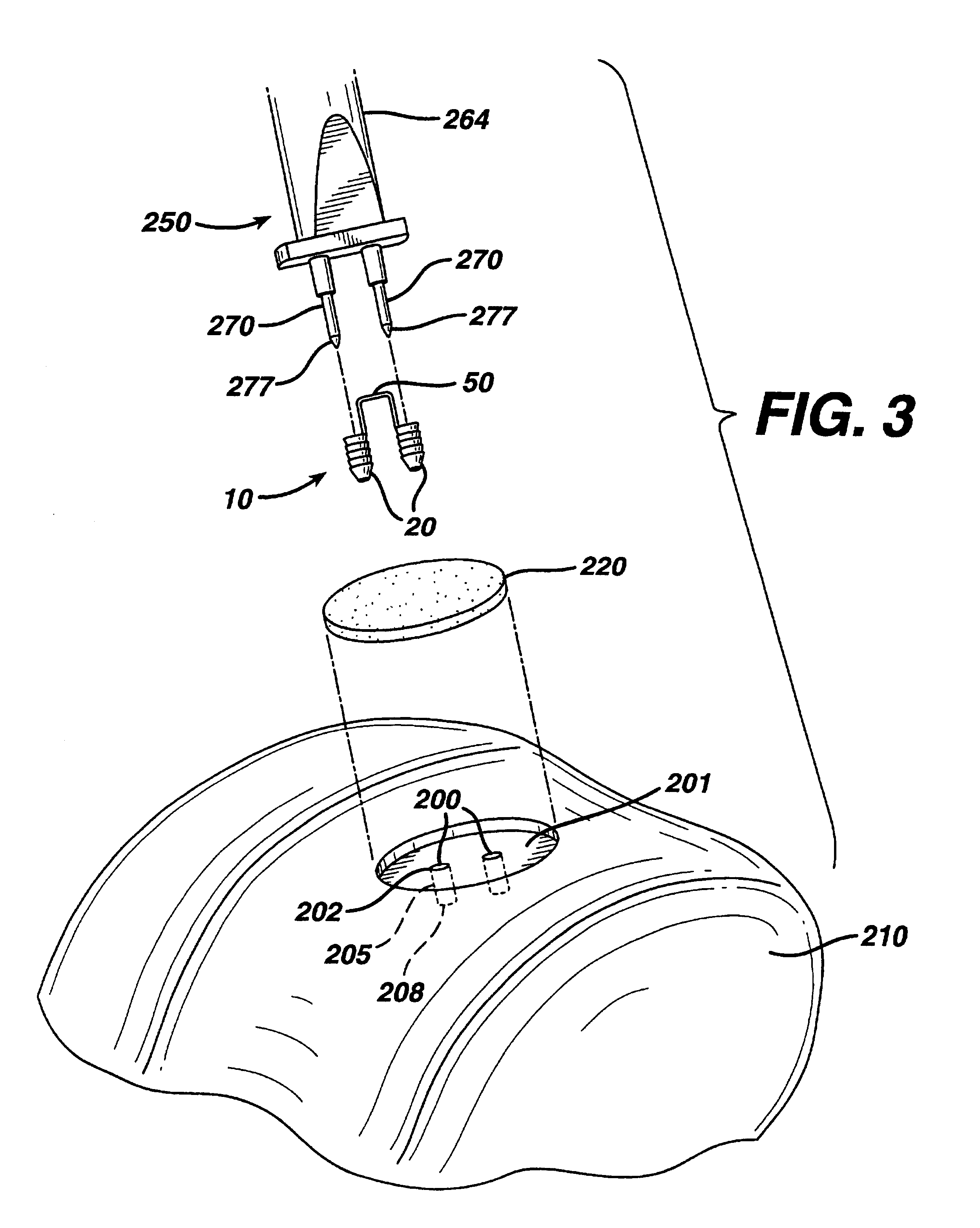Graft fixation device
a technology of graft and fixation device, which is applied in the direction of surgical staples, ligaments, prostheses, etc., can solve the problems of significant patient morbidity, difficult use of many of these devices in a minimally invasive arthroscopic procedure, and surgical challeng
- Summary
- Abstract
- Description
- Claims
- Application Information
AI Technical Summary
Benefits of technology
Problems solved by technology
Method used
Image
Examples
example
[0072]Six sheep were prepared for a surgical procedure using standard aseptic surgical techniques including the use of fully sterilized instruments and equipment, and conventional anesthesia procedures and protocols. The surgeon then created 7 mm diameter chondral (full thickness cartilage) defects on a weight-bearing area of the medial femoral condyle and in the trochlear groove in the right stifle (knee) in each of the six skeletally mature sheep. Defects were created using a specialized drill with a depth-stop to prevent subchondral bone exposure or penetration. The base surfaces of all the defects were then microfractured with a specialized micropick tool to provide access for cellular migration. The subjects were then separated into three groups of two subjects each:[0073]Group 1: defect filled with a collagen matrix, fixed with the graft fixation device of the present invention.[0074]Group 2: defect filled with a collagen matrix, fixed with 9-0 absorbable Vicryl™ suture (inter...
PUM
 Login to View More
Login to View More Abstract
Description
Claims
Application Information
 Login to View More
Login to View More - R&D
- Intellectual Property
- Life Sciences
- Materials
- Tech Scout
- Unparalleled Data Quality
- Higher Quality Content
- 60% Fewer Hallucinations
Browse by: Latest US Patents, China's latest patents, Technical Efficacy Thesaurus, Application Domain, Technology Topic, Popular Technical Reports.
© 2025 PatSnap. All rights reserved.Legal|Privacy policy|Modern Slavery Act Transparency Statement|Sitemap|About US| Contact US: help@patsnap.com



